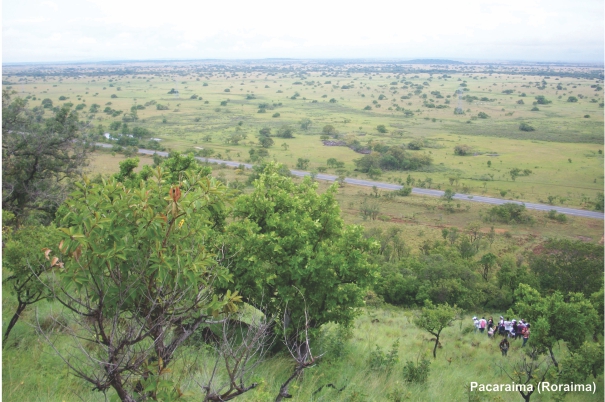TRAZOS SIMBÓLICOS EN EL PACÍFICO SUR COLOMBIANO: LAS CARTOGRAFÍAS ACÚSTICAS Y LA CONFIGURACIÓN TERRITORIAL (Symbolic brush strokes in the Southern Colombian Pacific: acoustic mapping and territorial configuration)
DOI:
https://doi.org/10.18227/2177-4307.acta.v7i15.1354Abstract
Después de la súbita aparición del cuarto continente en el siglo XV, las técnicas cartográficas hicieron parte de la intrépida empresa de imaginar, abstraer y representar los nuevos territorios a la luz de un conocimiento ‘científico’. Sin embargo, dichas elaboraciones no operaron nunca desde la neutralidad, por el contrario se constituyeron como uno de los más sofisticados artilugios del poder geopolítico que ocultaron a su paso, otras formas de conocer y de interpretar el mundo. Pese a esta gramática hegemónica, operan desde los movimientos sociales contemporáneos, como en el caso del Pacífico colombiano, otras formas de representación que escapan al canon de la escala, al norte de la brújula y a la cuadratura de las coordenadas, y que tras una lenta tarea de escuchar y recoger su pasado, inscriben en el territorio otras formas de ser, de estar, de vivir y de morir en el mundo. Palabras clave: cartografías; representación; contra-narrativas; cartografías acústicas. ABSTRACT After the sudden appearance of the fourth continent in the fifteenth century, mapping techniques were part of the company to imagine bold, abstract and represent the new territories in the light of a 'scientific' knowledge. However, no such elaborations never operated from neutrality, on the contrary is established as one of the most sophisticated gadgets of geopolitical power that hid in their wake, other ways of knowing and interpreting the space. Despite this hegemonic grammar, operating from contemporary social movements, as in the case of the Colombian Pacific, other forms of representation beyond the canon of the scale, north of the compass and the square of the coordinates, and after a slow task of listening and collecting their last recorded in the territory other ways of being, of living and dying in the world. Keywords: cartographies; representation; counter-narratives; acoustic mapping. RESUMO Depois da súbita aparição do quarto continente no século XV, as técnicas cartográficas fizeram parte do intrépido empreendimento de imaginar, abstrair e representar os novos territórios à luz de um conhecimento “científico”. No entanto, as ditas elaborações não operaram nunca na neutralidade, pelo contrário: se construíram como um dos mais sofisticados dispositivos de poder geopolítico que ocultaram em seu rastro outras formas de conhecer e interpretar o mundo. Não obstante a esta gramática hegemônica, operam desde os movimentos sociais contemporâneos, como no caso do Pacífico colombiano, outras formas de representação que escapam aos cânones da escala, ao norte da bússola e ao quadrante das coordenadas, e que traz uma lenta tarefa de escutar e colher seu passado, inscrevem no território outras formas de ser, de estar, de viver e de morrer no mundo. Palavras-chave: cartografías; representação; contranarrativas; cartografias acústicas. DOI: 10.5654/actageo2013.0715.0003Downloads
Downloads
Published
Issue
Section
License
Copyright (c) 2014 ACTA GEOGRÁFICA

This work is licensed under a Creative Commons Attribution-NonCommercial-NoDerivatives 4.0 International License.
PORTUGUÊS A Revista ACTA Geográfica deterá os direitos autorais dos trabalhos publicados. Os direitos referem-se a publicação do trabalho em qualquer parte do mundo, incluindo os direitos às renovações, expansões e disseminações da contribuição, bem como outros direitos subsidiários. Os(as) autores(as) têm permissão para a publicação da contribuição em outro meio, impresso ou digital, em português ou em tradução, desde que os devidos créditos sejam dados à Revista ACTA Geográfica.
ENGLISH ACTA Geográfica Journal will obtain the auctorial rights for all published texts. This also implies that the text can be published anywhere in the world, including all rights on renewal, expansion and dissemination of the contribution, as well as other subsidiary rights. The author’s get permission to publish the contribution in other medias, printed or digital, itmay be in Portuguese or translation, since the publication is credited to ACTA Geográfica Journal.

Este obra está licenciado com uma Licença Creative Commons Atribuição 4.0 Internacional.










